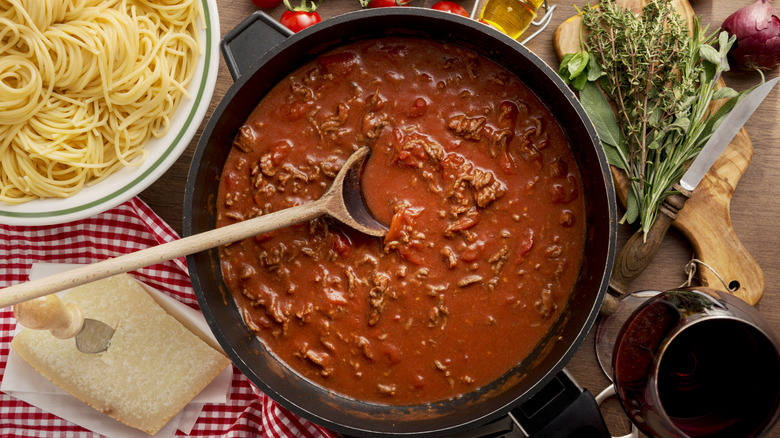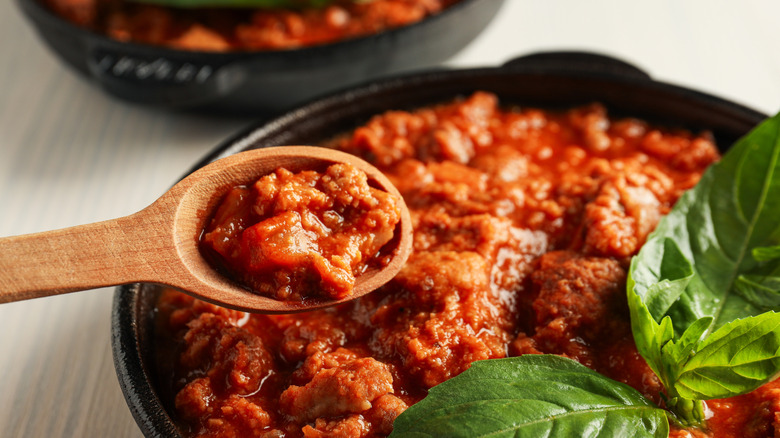The Ideal Cut Of Meat You Should Use When Making Bolognese
For a simple, cozy night in, nothing beats a hearty Bolognese sauce over pasta, topped with a mountain of parmesan. And while everyone has their own tricks for making the dish — from Ina Garten's favorite wine to use to Chef Ed Cotton's Bolognese recipe — the heart of this sauce is the meat, and choosing the right cut (and blend) makes all the difference. To learn more, Food Republic spoke with Anthony Marini, chef and owner of The Pass and The Italian Boy After Dark.
"Any Bolognese worth the trouble (and what I prefer) is made with a 20%/40%/40% mix of beef, pork, and veal," Marini says. "You can adjust to 30%/35%/35% mix if your ground beef contains more chuck in the blend."
While it might seem easier to buy just one type of meat at the store, each cut contributes to a different texture and flavor, creating a truly great Bolognese. "The beef is a good mix of fat and muscle, providing flavor and texture. The pork adds a sweetness and depth in flavor due to its marbling, and the veal (either shoulder or breast) has a tender texture that lends well to the mouthfeel of a sauce like this."
If you don't have a beef-pork-veal blend on hand, don't worry — you can still make a delicious Bolognese with any of these meats. Marini just warns against using cuts like filet mignon or skirt steak, as their "lean qualities ... do not add the right texture or flavor to the sauce."
How to properly cook your meat for Bolognese
While choosing the right cut of meat is crucial for a proper Bolognese, how you cook it is just as important. The first step is deciding whether to grind your meat or leave it whole. "While beef is acceptable for grinding and then using in a Bolognese, I prefer to leave pork and veal whole and allow them to be fully braised by the tomato product and wine before removing them, shredding them and returning all of it to the sauce to finish," Anthony Marini noted. Since pork and veal are rich in collagen, braising breaks it down, making the meat tender and infusing the sauce with deep, rich flavor.
Another key step is browning your meat in a pot or Dutch oven before adding liquids. This allows the Maillard reaction to take place, giving the meat a deep, umami-rich flavor and a slightly crisp texture. Just make sure your pot is at least at medium-high heat — if it's too low, the meat won't brown properly. And, much like overcrowding chicken in a pan can prevent crispy skin, overcrowding your meat can introduce excess moisture, which interferes with the browning process. If brown bits stick to the bottom of the pot, don't fret — that's actually a good thing! Simply deglaze with white wine to reincorporate that caramelized flavor into the sauce, and then let your Bolognese simmer at a low temperature for a long time — three to four hours.


